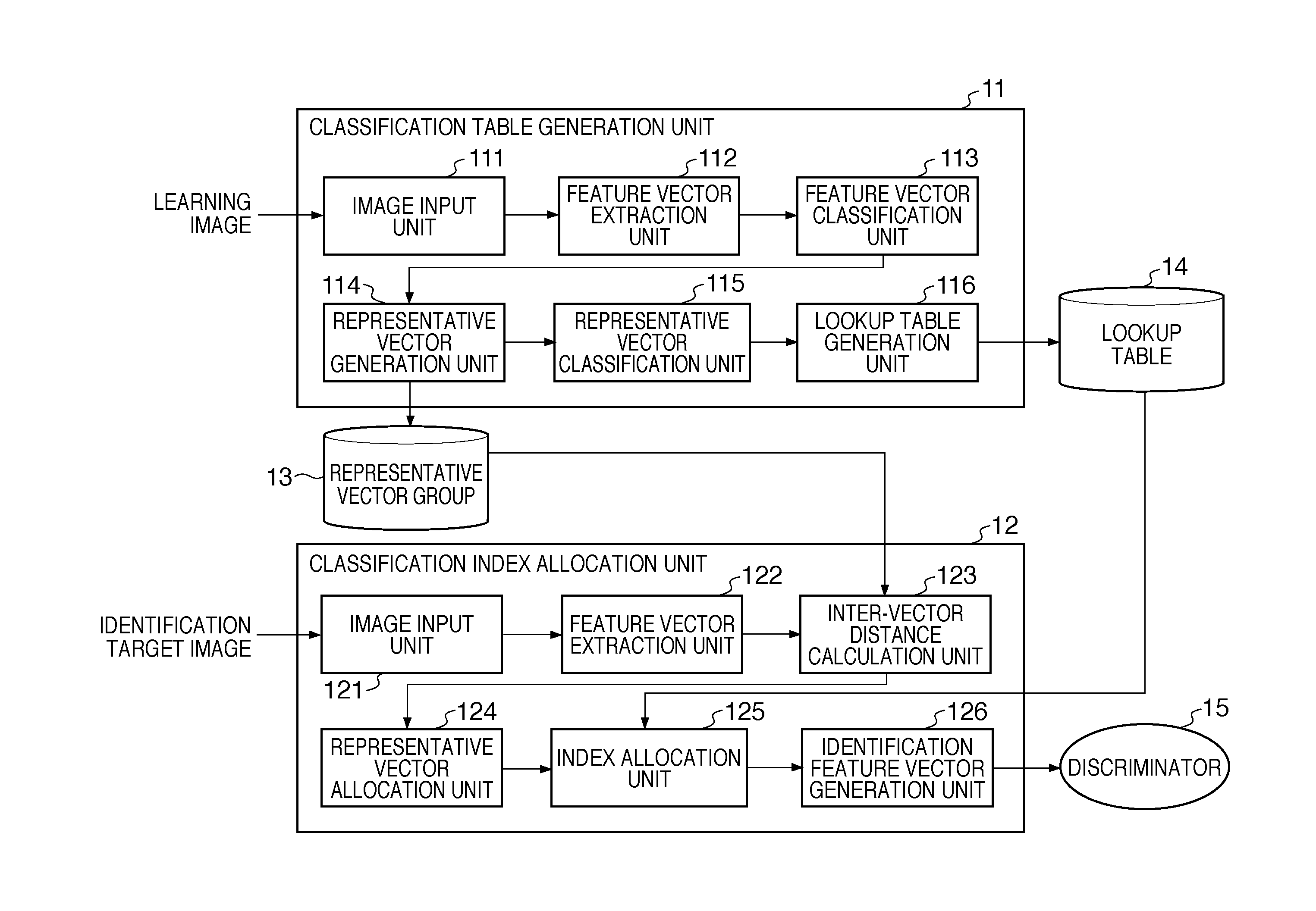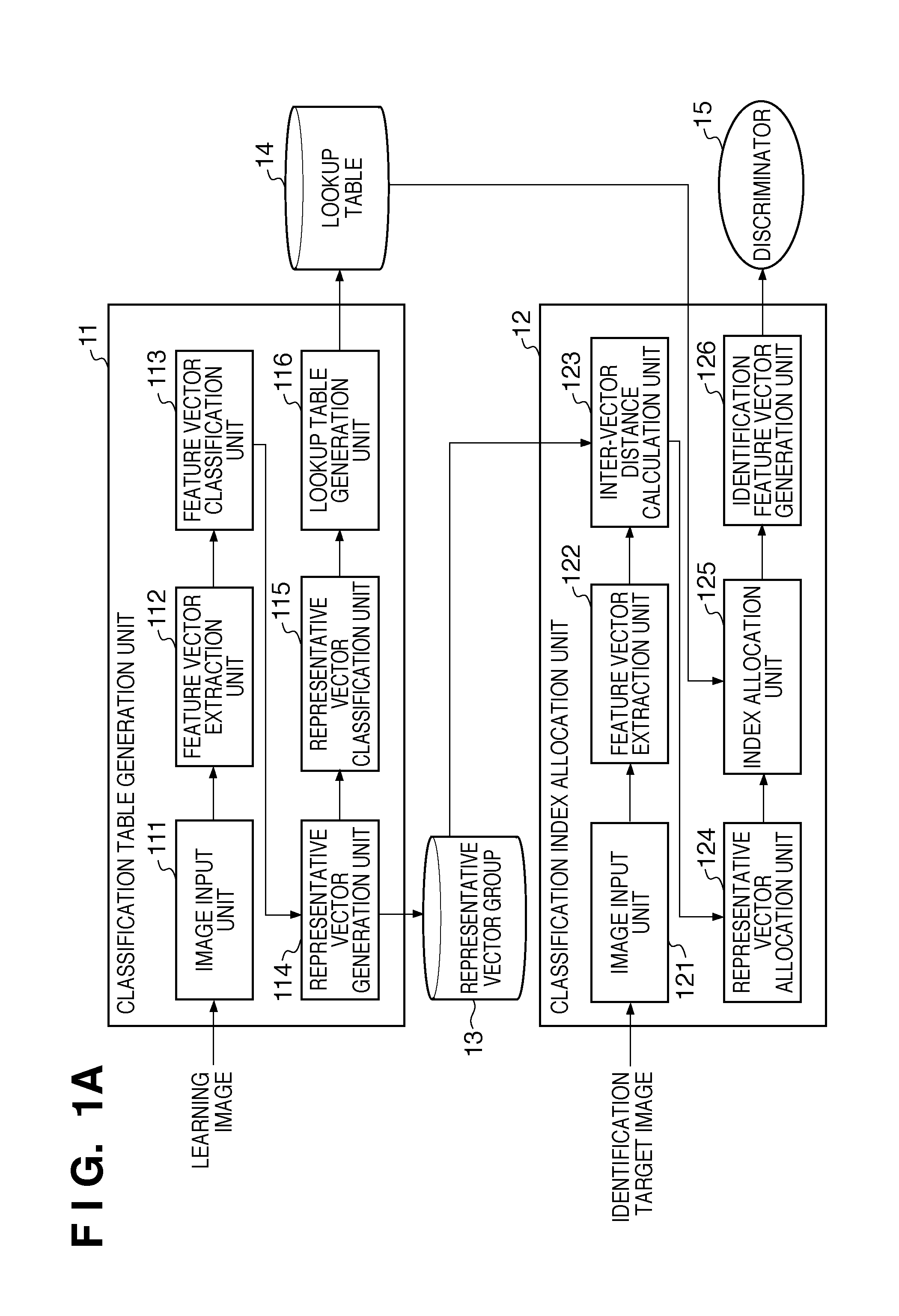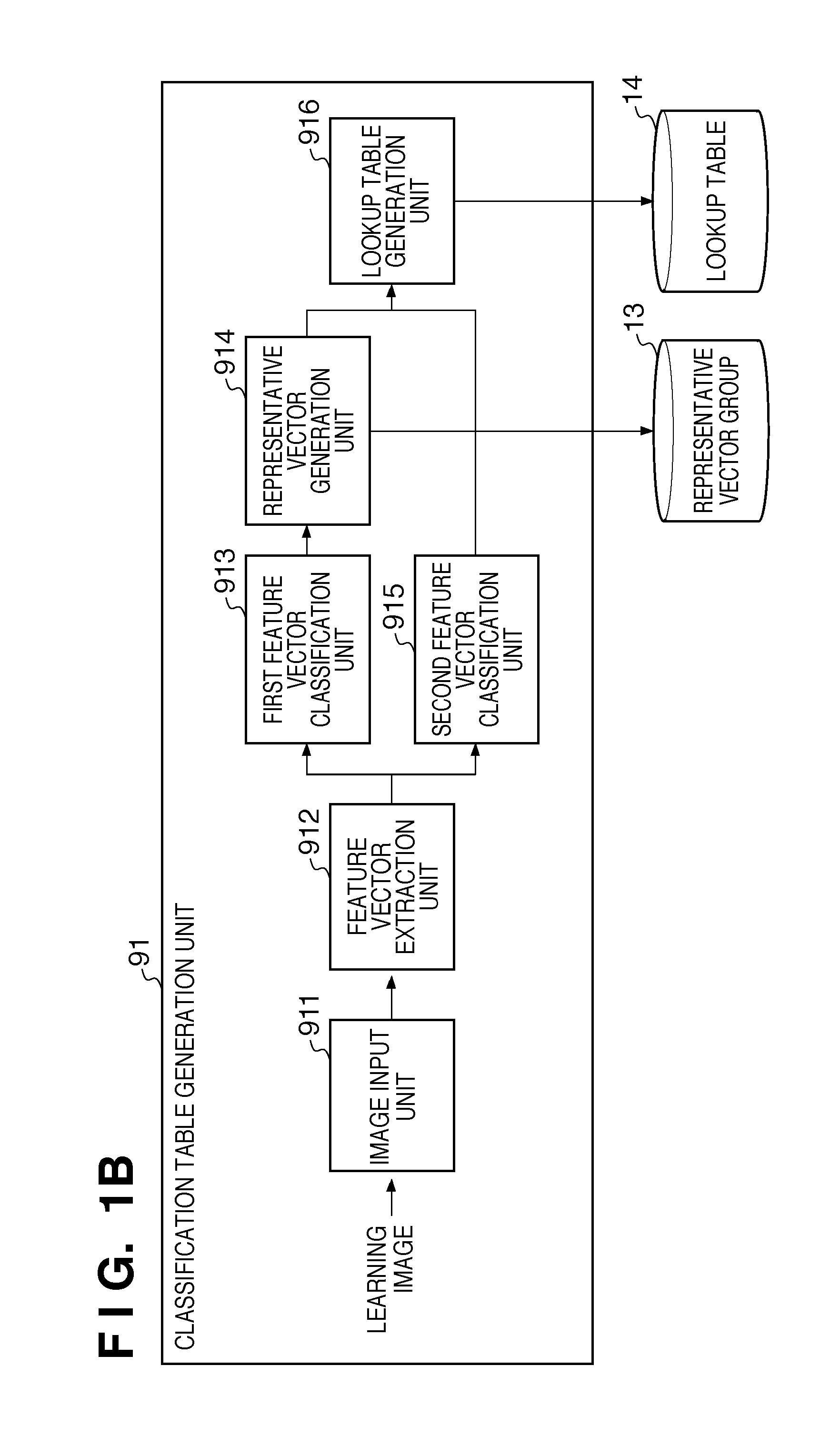Image processing apparatus and image processing method
a technology of image processing and image processing, applied in the field of image processing apparatus and image processing method, can solve the problems of large calculation amount and long identification processing time, affecting identification performance, and difficulty in real-time identification, so as to achieve the effect of suppressing the calculation amoun
- Summary
- Abstract
- Description
- Claims
- Application Information
AI Technical Summary
Benefits of technology
Problems solved by technology
Method used
Image
Examples
first embodiment
[0047]In order to identify an object in an image, an image processing apparatus according to the embodiment outputs identification information to identify an object from an identification target image. Note that the embodiment is also applicable to an identification target such as a person or a scene, and is not limited to recognition of a target object.
[0048]The schematic arrangement of the image processing apparatus according to the first embodiment will be described with reference to FIG. 1A. The image processing apparatus includes a classification table generation unit 11 and a classification index allocation unit 12.
[0049]The outline of the classification table generation unit 11 and the classification index allocation unit 12 will be explained. The classification table generation unit 11 accepts input of a learning image from an external device and extracts feature vectors from the input learning image. The extracted feature vectors are classified by a first classification met...
second embodiment
[0088]In the first embodiment, processing of causing the classification table generation unit 11 to perform classification of second stage for representative vectors generated as the result of classification of first stage has been described. At this time, a single index is always allocated to all feature amounts classified into a cluster by the classification of first stage. In the second embodiment, however, processing of classifying two different feature vectors, which are classified into a single cluster by classification of first stage, into different clusters by classification of second stage will be described.
[0089]FIG. 1B is a block diagram showing the arrangement of a classification table generation unit 91 of an image processing apparatus according to the embodiment. Note that the arrangement of a classification index allocation unit 12 is the same as that of the first embodiment, and a description thereof will not be repeated. Referring to FIG. 1B, an image input unit 911...
third embodiment
[0100]The first embodiment aims at determining the presence / absence of a target object in an arbitrary input image. The third embodiment aims at determining, using two different types of target objects, which target object exists in an input image. In this case, when identifying the target object, an important element is not the shape difference between feature vectors but which one of the two different types of target objects is the target object in which a feature vector appears. In this embodiment, an example will be described in which second classification is performed based on the identification usability of feature vectors.
[0101]In this embodiment, 2-class identification of objects A and B will be examined. The operation of each process of the classification table generation step according to the embodiment will be described with reference to FIG. 10A. In step S1010 of FIG. 10A, input of a learning target image is accepted from an external device. At this time, the input learn...
PUM
 Login to View More
Login to View More Abstract
Description
Claims
Application Information
 Login to View More
Login to View More - R&D
- Intellectual Property
- Life Sciences
- Materials
- Tech Scout
- Unparalleled Data Quality
- Higher Quality Content
- 60% Fewer Hallucinations
Browse by: Latest US Patents, China's latest patents, Technical Efficacy Thesaurus, Application Domain, Technology Topic, Popular Technical Reports.
© 2025 PatSnap. All rights reserved.Legal|Privacy policy|Modern Slavery Act Transparency Statement|Sitemap|About US| Contact US: help@patsnap.com



